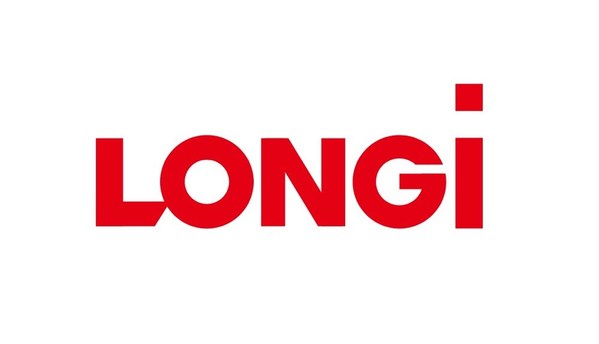BEIJING, Dec. 20, 2023 /PRNewswire/ -- Entering the Qianhai and Shekou Area of the China (Guangdong) Pilot Free Trade Zone in Shenzhen, one can immediately feel the sheer size and vibrancy of one of the busiest ports in China: there are rows of high-rise buildings and enormous warehouses and logistics centers; and trucks carrying containers pass by constantly.
December usually marks one of the busiest periods for the port area, as everything from spare parts to electronic devices are shipped from here to all over the world for the upcoming holiday seasons. The annual import and export value of the port area through the area skyrocketed from 71.2 billion yuan ($10.06 billion) in 2015 to 304.6 billion yuan in 2022, with an annual average growth rate of 23 percent.
The bustling scenes at the port area and the exponential growth over such a short period put on vivid display the quintessential "Shenzhen speed" - which refers to the rapid transformation of the city from a fishing village to a world class metropolis in just a few decades. More importantly, this is where the construction of the Shekou industrial zone began in July 1979, widely considered as the "first shot" of China's reform and opening-up.
This year marks the 45th anniversary of the beginning of China's reform and opening-up. On December 18, 1978, about seven months before the "first shot" was fired, the 11th Central Committee of the Communist Party of China (CPC) held its third plenary session, where the Party decisively abandoned the policy of taking class struggle as the key link, and initiated a strategic shift in the focus of the Party and country's work, thereby ushering in a new period of reform, opening up, and socialist modernization.
Miraculous achievements
That fateful decision has led to miraculous achievements in all aspects of China over the past 45 years, essentially transforming the country from a poor, agrarian society to a modern global power and propelling the country from margins of the world to the center. In 1978, China's GDP was $149.54 billion - only about 1.75 percent of global GDP, but in 2022, China's economy, at about $18 trillion, is the world's second-largest and accounts for about 18.6 percent of global GDP. China's GDP growth averaged more than 9 percent annually since its reform and opening-up and more than 800 million people have been lifted out of poverty, according to the World Bank.
Reform and opening-up is the right and necessary path for China because it is the only path that fits China's national conditions and has achieved unparalleled results.
"China's success provides ideas for developing countries today that it is better to rely on their own resources and local realities, while better using high-quality conditions from outside than to copy alternative models," Cao Heping, an economist at Peking University, told the Global Times on Sunday, adding that reform and opening-up not only changed Chinese life for the better, but also strengthened Chinese people's confidence in the country's institutions, path forward and future prospects.
Underneath China's economic miracle is the improved lives of the Chinese people. In 1978, per capita disposable income in the urban area was only 343 yuan, but that figure jumped to 36,883 yuan in 2022. The Engel's Coefficient - the proportion of money spent on food in household expenses, a reliable barometer of income growth - of rural households dropped from 67.7 in 1978 to 33 in 2022.
Since the 18th CPC National Congress in 2012, China has continued to deepen reform and expand opening-up, leading to rapid development in all respects. Since 2012, China remained the world's second-largest economy, the world's top manufacturing power and top trader.
China is leading in many fields, including in the number of Fortune 500 companies, the number of 5G stations, the number of broadband users, and the length of high-speed railways and highways.
Global contribution
Beyond improved Chinese life, China's economic miracle has also greatly contributed to global development. Between 2013 and 2021, China's annual GDP growth rate averaged 6.6 percent, far higher than the global average of 2.6 percent. Its contribution to global growth averaged about 38.6 percent during that period, higher than the combined contribution of G7 countries.
In addition to contribution to global growth and steady supply of affordable and high-quality goods for the world, China's vast market and its opening-up have created massive opportunities for global businesses.
US iconic fast food chain McDonald's is one of the first foreign businesses that benefited from China's reform and opening-up. In 1990, the company opened its first restaurant in the Chinese mainland in Shenzhen's Luohu district.
Recalling the opening day 33 years ago, Raymond Ye, franchising division president of McDonald's China, described quite a bustling scene. "The line started from our counter on the second floor all the way to the front door … With the number of people waiting in line likely exceeding 800," Ye told the Global Times. "That was basically every day for the first year.''
More than 30 years later, the restaurant, now surrounded by countless other shops on a busy commercial center, is still bustling with consumers. And the number of McDonald's across China also grew exponentially. McDonald's plans to increase the number of restaurants from more than 5,600 currently to 10,000 by 2028.
"The development of McDonald's to the present - from the first one to more than 5,600 stores - is a result of the reform and opening-up. We also believe that reform and opening-up must move forward … And shouldn't stop," Ye said.
The confidence in China's development prospects and continued reform and opening-up is also shared by many foreign businesses, as more and more companies, including high-tech ones, are exploring and expanding in the Chinese market.
In the Lingang new area of Shanghai, also a frontier of China's reform and opening-up, office buildings of foreign companies are scattered in every corner of the area. Inside the workshop of the German company Lenze, a leading automation specialist, the automated production line runs smoothly, converting components into finished products.
The company set up the plant in 2006, started a second phase expansion in 2012 and moved its Asia research and development center to Lingang in 2019. "The first reason for choosing Lingang and choosing China is that the Chinese market has the biggest potential and is the largest for automation. The second reason is that China's business environment has been very good in recent years, with great emphasis on opening-up, innovation and reform," Xie Weidong, president East Asia and general manager China at Lenze Group, told the Global Times.
After the tremendous success of the past 45 years, China will continue to deepen reform and expand high-level opening-up going forward, creating greater opportunities for global businesses, analysts said. Going forward, "new technologies, the digital economy, green development will be the main engine of growth," Cao said.
The recently concluded Central Economic Work Conference, a tone-setting meeting for economic policy in 2024, stressed that it is crucial to strengthen the endogenous driving force for development through reform and opening up, ensure the advancement of both profound reforms and high-level opening-up. Among specific measures, the meeting said that barriers shall be removed to make it easy for foreigners to do business, study and travel in China.
Read more:
Path to miracle: 45 years of reform and opening-up propel China to center of global stage
https://www.globaltimes.cn/page/202312/1303815.shtml











